Sample SCRN Exam Questions
1. A patient with a right anterior cerebral artery (ACA) stroke would be expected to present with
- right leg weakness greater than right arm weakness.
- left leg weakness greater than left arm weakness.
- right arm weakness greater than right leg weakness.
- left arm weakness greater than left leg weakness.
2. Wallenberg syndrome usually results from occlusion or infarction of the
- basilar artery.
- posterior inferior cerebellar artery.
- anterior inferior cerebellar artery.
- superior cerebellar artery.
3. When evaluating a patient with transient ischemic attack, the physician utilizes the ABCD2 Score. This score indicates
- how severe the event was.
- the patient's risk for having a stroke.
- the patient's discharge disposition.
- what medications the patient will need.
4. A 57-year-old patient presents to the Emergency Department (ED) with slurred speech and aphasia that began two hours prior to arrival. Vital signs on arrival are BP 225/120, RR 18, and a blood glucose level of 350. Which of the following is the FIRST PRIORITY of action for this patient?
- Prepare tPA for administration.
- blood glucose management
- Perform a bedside swallow screen.
- blood pressure management
5. Which pharmacologic agent commonly requires ongoing therapeutic lab monitoring?
- apixaban
- dabigatran
- aspirin
- warfarin
6. A patient in acute rehabilitation becomes unwilling to participate in therapy. This is a common manifestation of which of the following post-stroke complications?
- seizure activity
- worsening stroke
- depression
- incontinence
7. A patient undergoes a diagnostic cerebral angiogram. The SCRN should know that post-procedure, the patient should be frequently assessed for
- oral angioedema.
- heart failure.
- peripheral vascular status.
- hyponatremia.
8. A patient who experienced a stroke 2 months ago is readmitted with secondary stroke. The patient states, "I don't need to fill my prescriptions or follow up with my physician because I'm fine now." An appropriate nursing diagnosis for this patient would be
- altered health maintenance.
- impaired body image.
- alterations sensory/perceptual.
- dysfunctional grieving.
9. An SCRN is developing a log for acute stroke patients presenting to the emergency department to begin tracking quality measures. Which of the following would be the MOST important quality measure to include on the log?
- door to treatment time
- county of residence
- physician of record
- laboratory testing
10. A patient experienced new onset stroke symptoms with last known well 45 minutes prior and is being evaluated for treatment with IV alteplase. Fingerstick glucose is 80, and non-contrast CT head is negative for hemorrhage. There is no history of anticoagulant use, bleeding or thrombocytopenia. Labs have been drawn and sent. The SCRN should
- prepare to administer alteplase once the order is given.
- place a urinary catheter.
- wait for the PT and PTT results before administering alteplase.
- explain to the patient that the glucose of 80 is a contraindication to treatment.
11. An SCRN is participating in a community health fair. One of the attendees asks how much exercise is needed for stroke and heart attack prevention. The BEST response is to recommend moderate to vigorous aerobic exercise at least
- 10 minutes/day, 7 days per week
- 20 minutes/day, 3-4 days per week
- 40 minutes/day, 3-4 days per week
- 60 minutes/day, 1-2 days per week
12. The SCRN should recognize that a significant component of quality acute stroke care begins with
- Emergency Medical Services (EMS).
- availability of MRI.
- early administration of antithrombotic agents.
- availability of neurosurgery services.
13. Functional independence measure (FIM) is a standardized assessment that includes
- sensory neglect.
- depression screen.
- agraphia.
- social cognition.
14. The SCRN has just admitted a new acute stroke patient to the Neuro ICU. The initial non-contrast head CT in the emergency department shows a new subarachnoid hemorrhage. The SCRN teaches the family member that a
- lumbar puncture is the gold standard to confirm a diagnosis of subarachnoid hemorrhage.
- subarachnoid hemorrhage must be treated with surgical intervention.
- subarachnoid hemorrhage is often caused by long-term alcohol abuse.
- spontaneous rupture of an aneurysm can cause a subarachnoid hemorrhage.
15. A patient arrives to the ED with a subarachnoid hemorrhage and a systolic blood pressure of 176 mm Hg. The SCRN should
- administer PRN antihypertensive medications to achieve a target systolic pressure less than 160 mm Hg.
- continue to monitor and administer PRN antihypertensive medications if the systolic pressure is greater than 185 mm Hg.
- administer PRN antihypertensive medications to achieve a target systolic pressure less than 130 mm Hg.
- continue to monitor and notify the physician for any systolic pressure over 190 mm Hg.
Answers: 1. B; 2. B; 3. B; 4. D; 5. D; 6. C; 7. C; 8. A; 9. A; 10. A; 11. C; 12. A; 13. D; 14. D; 15. A
Note: These items are intended only as samples of the style of questions you should expect. They are not representative of the numbers of any category of question that will be included on the test.
Visit the SCRN Study Materials page for more resources to help you study for the SCRN exam.
Dates and Deadlines
CNRN® |
|
||||||
| Apply Now |
SCRN® |
|
||||||
| Apply Now |
